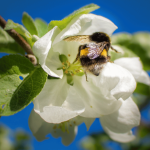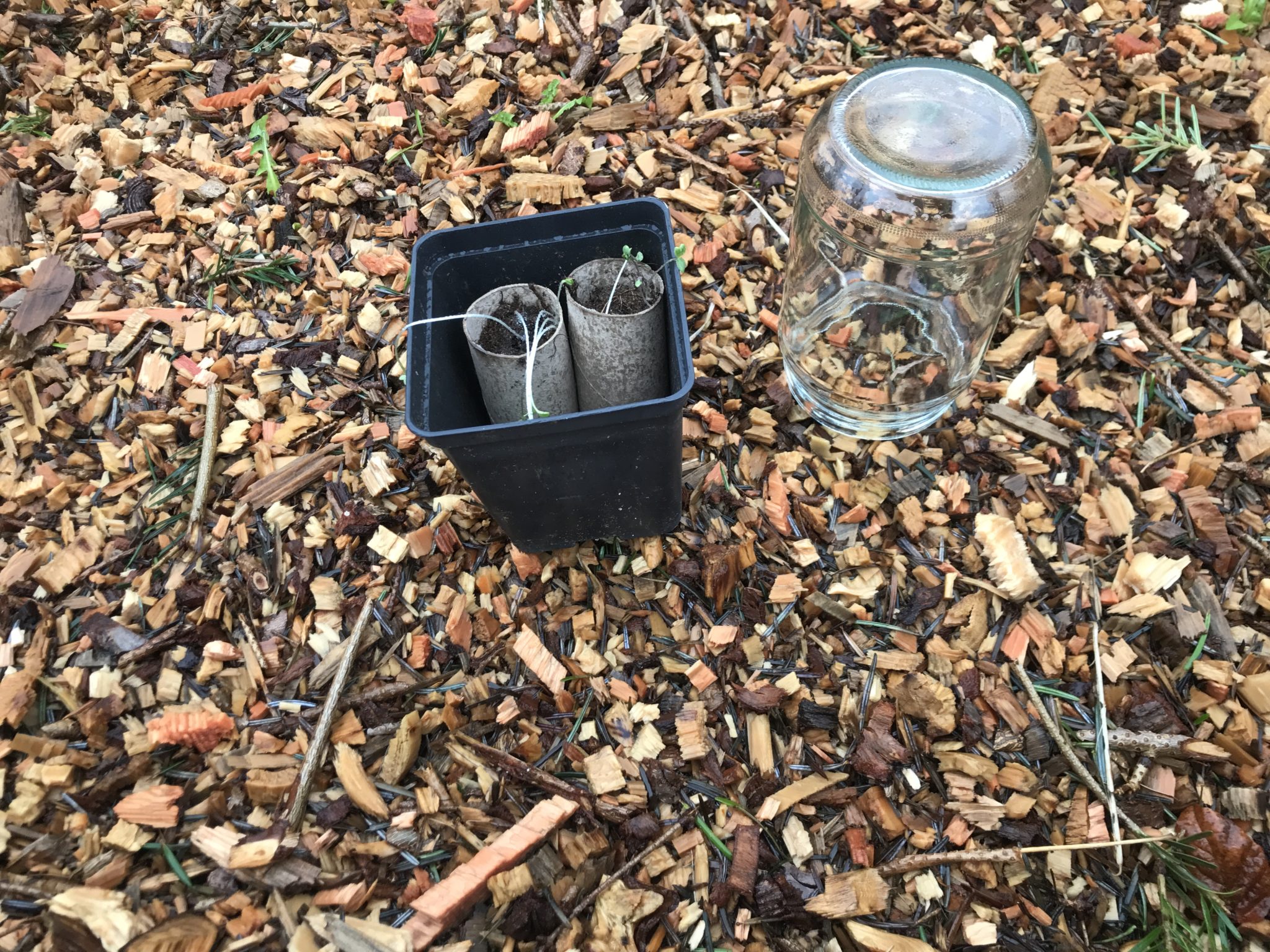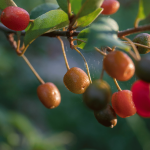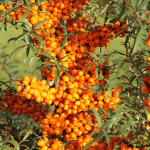Unearthing the Global Appeal of the American Hazelnut
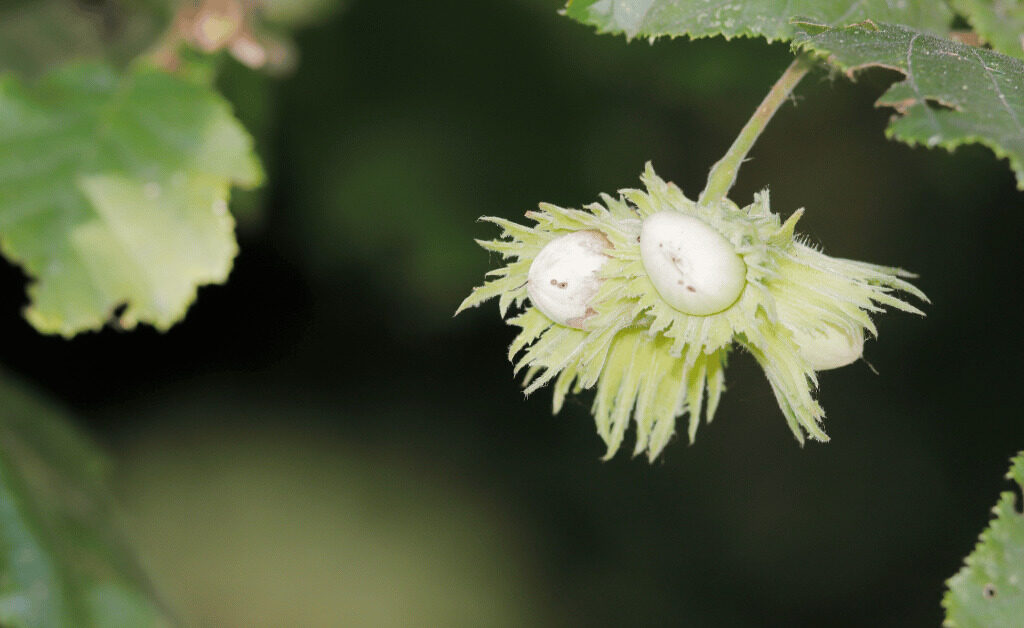
The American Hazelnut, scientifically known as Corylus americana, is a native species to North America, distinct from its European counterpart, Corylus avellana. This hardy deciduous shrub, often found in the wild, is cherished for its clusters of sweet, edible nuts. The American Hazelnut is smaller in size compared to the European variety, but what it lacks in size, it makes up for in its robust flavor and adaptability to various soil and climate conditions.
Now, let’s delve into a personal journey of cultivating this remarkable plant. It all began with a single American Hazelnut nut, procured from an online marketplace. This tiny nut, planted and cared for with dedication, has now grown into a thriving plant in its second year. Despite facing the harsh winter, it has demonstrated an admirable recovery, embodying the spirit of perseverance. This journey of cultivation, resilience, and botanical discovery is a testament to the joy and rewards of gardening, even when faced with challenges.
The American Hazelnut: A Global Perspective
The American Hazelnut, known scientifically as Corylus americana, is a unique species native to North America. It stands distinct from its European cousin, Corylus avellana, in several ways. While both species share the characteristic of producing delicious and nutritious nuts, there are notable differences in their size, growth habits, and adaptability.
The American Hazelnut is a hardy shrub that typically grows to a height of 2.5 to 5 meters (8 to 16 feet), making it smaller than the European Hazelnut, which can reach up to 7 meters (23 feet). This compact size makes the American Hazelnut an excellent choice for smaller gardens or landscapes with limited space.
Despite its smaller stature, the American Hazelnut is no less appealing. Its adaptability to various soil and climate conditions makes it a versatile addition to gardens across the globe. From the temperate climates of its native North America to the cooler regions of Scandinavia, the American Hazelnut thrives, demonstrating a resilience that is truly admirable.
But what truly sets the American Hazelnut apart is its flavor. The nuts it produces are smaller than those of the European variety, but they pack a robust, sweet taste that is highly prized. The flavor is rich and distinctive, making American Hazelnuts a sought-after ingredient in a variety of culinary applications, from pastries and chocolates to salads and savory dishes.
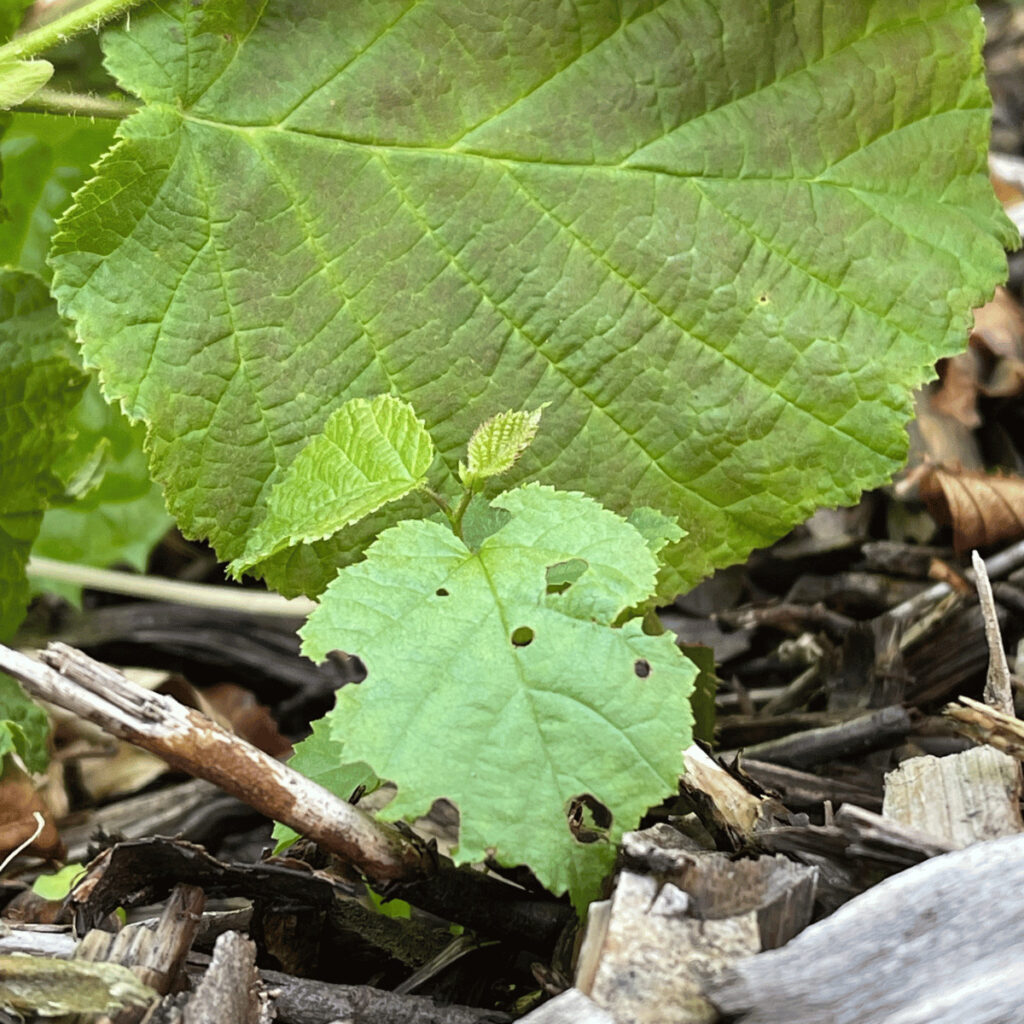
Personal Journey with the American Hazelnut
My personal journey with the American Hazelnut began in an unexpected place – an online marketplace. It was there that I found and purchased American Hazelnut seeds, the beginning of a gardening adventure that would prove both surprising and enlightening.
Upon receiving the seeds, I placed them in my refrigerator for a process known as cold stratification, a few weeks of simulated winter that many seeds require to break dormancy. After this period, I planted the seeds in a pot and waited for them to sprout. However, the process took longer than expected. As weeks turned into months with no sign of growth, I eventually moved the pot outside and let nature take its course.
As autumn arrived, I stumbled upon the forgotten pot and to my surprise, found that the seeds had sprouted. The pot seemed to have dried out, and with winter fast approaching, I quickly transplanted the young plant, hoping it wasn’t too late.
Winter came and went, and as the first signs of spring appeared, so too did the American Hazelnut. It had not only survived the winter but had also managed to thrive despite the dry conditions. The sight of the resilient plant, emerging stronger and more vibrant, was a testament to its adaptability and hardiness.
The journey with the American Hazelnut, from a seed in the refrigerator to a thriving plant, has been filled with unexpected surprises and lessons in resilience. As we move forward, we’ll delve deeper into the science behind this hardiness and explore the many uses and benefits of the American Hazelnut.
The Science Behind the Resilience of the American Hazelnut
The American Hazelnut is a plant that has intrigued scientists and gardeners alike with its adaptability and resilience. This hardy shrub can thrive in a variety of soil and climate conditions, making it a versatile choice for gardens across the globe.
The adaptability of the American Hazelnut can be attributed to its biological characteristics. Like many other plants, the American Hazelnut has developed strategies to survive in different environments. For instance, it can tolerate a range of soil types, from sandy to clay, and it can grow in both full sun and partial shade. This adaptability makes it a robust and resilient plant that can thrive in diverse conditions.
In addition to its adaptability, the American Hazelnut also has a high biological efficiency. This means it can convert a large amount of solar energy into carbohydrates per unit area, more so than many other crops. This efficiency contributes to its resilience and its ability to thrive in various conditions.
The cultivation and propagation of the American Hazelnut have been subjects of scientific research. Studies have explored the plant’s genetic diversity, its cytogenetics, and its biomass yields. For instance, a study titled “Genetic diversity, cytogenetics, and biomass yields among taxa of giant reeds (Arundo species)” by D. Touchell et al., discusses the genetic diversity and cytogenetics of various plant species, including the American Hazelnut. The study found that despite a low level of genetic variability among American Hazelnut accessions, dry biomass yields varied significantly, ranging from 6.5 to 65 Mg ha per year for the third growing season.
Another study titled “Germplasm Resources of Oaks (Quercus L.) in China: Utilization and Prospects” by Yong Wang et al., discusses the adaptability of various plant species, including the American Hazelnut, to complex climatic and soil conditions. The study found that oaks, which are similar to hazelnuts in many ways, have been widely distributed since ancient times and have greater functional value than other species in the Fagaceae family.
These studies and others like them contribute to our understanding of the American Hazelnut’s resilience and adaptability. They provide valuable insights into the plant’s biology and cultivation, helping us appreciate its unique characteristics and potential uses.
The American Hazelnut in the Garden
The American Hazelnut, with its adaptability and resilience, offers numerous benefits when included in home gardens, small-scale farms, and permaculture designs. Its compact size makes it an excellent choice for smaller gardens or landscapes with limited space. Moreover, its ability to thrive in various soil and climate conditions makes it a versatile addition to any garden.
In permaculture designs, the American Hazelnut can play a crucial role. It can serve as a windbreak, provide shade, and contribute to the overall biodiversity of the garden. Its deep roots help improve soil structure and prevent erosion, while its leaves, which fall in autumn, add organic matter to the soil, enhancing its fertility.
For small-scale farmers, the American Hazelnut can be a valuable crop. The nuts it produces are not only delicious but also highly nutritious, packed with protein, fiber, and healthy fats. They can be sold fresh, roasted, or used to make hazelnut butter, oil, and flour, providing a potential source of income.
Growing Your Own American Hazelnut
If you’re considering growing your own American Hazelnut, there are a few things to keep in mind. First, while the plant is adaptable to various conditions, it prefers well-drained soil and full to partial sun. It can tolerate some shade, but too much can reduce nut production.
When it comes to planting, American Hazelnut trees should be spaced about 3.6 to 4.5 meters (12 to 15 feet) apart. If you’re planning to grow them as a hedge, the spacing can be reduced to about 1.2 to 1.5 meters (4 to 5 feet). Remember to water the plants regularly, especially during dry periods, but avoid overwatering as this can lead to root rot.
Characteristics of the American Hazelnut
The American Hazelnut is a deciduous shrub that typically grows to a height of 2.5 to 5 meters (8 to 16 feet). Its leaves are broad and rounded, with a pointed tip and doubly serrated edges. They are dark green on top and paler underneath, turning yellow to orange in the fall.
In early spring, the American Hazelnut produces male and female flowers. The male flowers are long, yellow catkins that hang from the branches, while the female flowers are small and red, barely visible among the buds. After pollination, the female flowers develop into clusters of nuts, each enclosed in a leafy husk.
The nuts of the American Hazelnut are small and round, with a hard, brown shell. Inside is a sweet, flavorful kernel that can be eaten raw, roasted, or used in cooking and baking.
Varieties of the American Hazelnut
While the wild type of the American Hazelnut is most common, there are several cultivated varieties available. These include the ‘Winkler’ and ‘Webb’ varieties, which are known for their large nuts and high yields. There’s also the ‘Rush’ variety, which is resistant to Eastern Filbert Blight, a common disease of hazelnuts.
In addition to these, there are several hybrid varieties that combine the traits of the American Hazelnut with those of the European Hazelnut. These hybrids, such as the ‘Jefferson’ and ‘Yamhill’, are bred for their large nuts, high yields, and disease resistance.
Whether you’re a home gardener, a small-scale farmer, or a permaculture practitioner, the American Hazelnut has a lot to offer. With its adaptability, resilience, and numerous benefits, it’s a plant that’s truly worth considering for your garden.
The American Hazelnut, while a charming addition to any garden, is not just a pretty face. It offers a host of uses that extend beyond the garden, making it a truly versatile plant.
Hazelnut In the Garden
In the garden, the American Hazelnut serves multiple functions. Its dense growth makes it an excellent choice for creating privacy screens or windbreaks. Its deep roots help prevent soil erosion, making it a good choice for slopes or areas prone to erosion. Additionally, its fallen leaves contribute to soil fertility by adding organic matter.
The American Hazelnut is also a valuable plant for wildlife. Its nuts provide food for a variety of birds and mammals, including squirrels, jays, and chipmunks. Its dense growth offers shelter for birds and small animals, and its flowers provide early spring pollen for bees and other pollinators.
Culinary Uses
The nuts of the American Hazelnut are a delicious treat that can be eaten raw, roasted, or used in a variety of dishes. With a sweet, rich flavor, hazelnuts pair well with both sweet and savory ingredients. Consider using them in baking, adding to salads, or grinding into a paste for homemade hazelnut butter. For a flavorful twist, press them to extract hazelnut oil, an excellent choice for cooking and enhancing salad dressings.
Craft and Decorative Uses
The shells of the American Hazelnut, while hard, can be used in a variety of craft projects. They can be painted and strung into garlands, used to create natural jewelry, or incorporated into homemade potpourri. The branches of the American Hazelnut, with their attractive catkins, can also be used in floral arrangements or as part of a winter centerpiece.
Medicinal Uses
The American hazelnut (Corylus americana) has been used medicinally by various Native American tribes. Although specific detailed abstracts were not found in the current search results, existing ethnobotanical literature provides valuable insights into the traditional uses of this plant. Here is a general overview based on historical and ethnobotanical records:
Traditional Medicinal Uses
- Astringent and Wound Healing:
- Poultices and Infusions: Native Americans commonly used the bark and leaves of the American hazelnut to create poultices and infusions. These were applied to wounds and cuts to promote healing and prevent infections due to their astringent properties.
- Digestive Aid:
- Nuts and Leaves: The nuts and sometimes the leaves were used to treat digestive issues. They were believed to help with gastrointestinal discomfort and improve digestion.
- Anti-inflammatory Uses:
- Bark and Root Decoctions: Decoctions made from the bark and roots were utilized to reduce inflammation and treat various inflammatory conditions, including joint pain and swelling.
- Respiratory Treatments:
- Smoked Leaves: In some traditions, the leaves were dried and smoked as a remedy for respiratory issues such as colds and coughs.
- Nutritional Supplement:
- Edible Nuts: Beyond medicinal uses, the nuts of the American hazelnut were an important food source, providing essential nutrients and energy. They were often eaten raw or ground into meal for use in various dishes.
Ethnobotanical References
Ethnobotanical studies, such as those by Daniel E. Moerman in his comprehensive work “Native American Ethnobotany,” document the medicinal applications of numerous plants, including the American hazelnut, by different tribes. These records highlight the diverse and practical uses of native plants in traditional medicine systems.
In conclusion, the American Hazelnut is a plant of many uses. Whether in the garden, the kitchen, the craft room, or the medicine cabinet, it offers a wealth of possibilities for those willing to explore.
Conclusion
The American Hazelnut, with its compact size and adaptability, is a versatile addition to any garden, whether you’re a home gardener, a small-scale farmer, or a permaculture practitioner. Its resilience, as demonstrated in its ability to thrive in various soil and climate conditions, is a testament to its hardiness. And its delicious, nutritious nuts offer a wealth of culinary possibilities.
But perhaps the most compelling aspect of the American Hazelnut is the story it tells – a story of resilience, adaptability, and the joy of gardening. From a seed purchased on an online marketplace to a thriving plant that survived a harsh winter and dry conditions, the American Hazelnut embodies the spirit of gardening – a spirit of patience, hope, and the joy of watching something grow.
As we conclude this exploration, I encourage you to delve into the world of the American Hazelnut and sustainable gardening. Whether you’re planting your first seed or tending to a mature garden, there’s always something new to learn, a new plant to discover, a new story to tell. And who knows? Perhaps the American Hazelnut will be the next chapter in your gardening journey.
Explore the Resilience of the American Chinquapin
Interested in learning about another resilient nut tree? Dive into our comprehensive guide on the American Chinquapin, a dwarf chestnut that’s as hardy as it is fruitful. Discover its unique characteristics, learn how to grow it from seed, and see how it can be a delightful addition to your garden. Read more about the American Chinquapin here.

